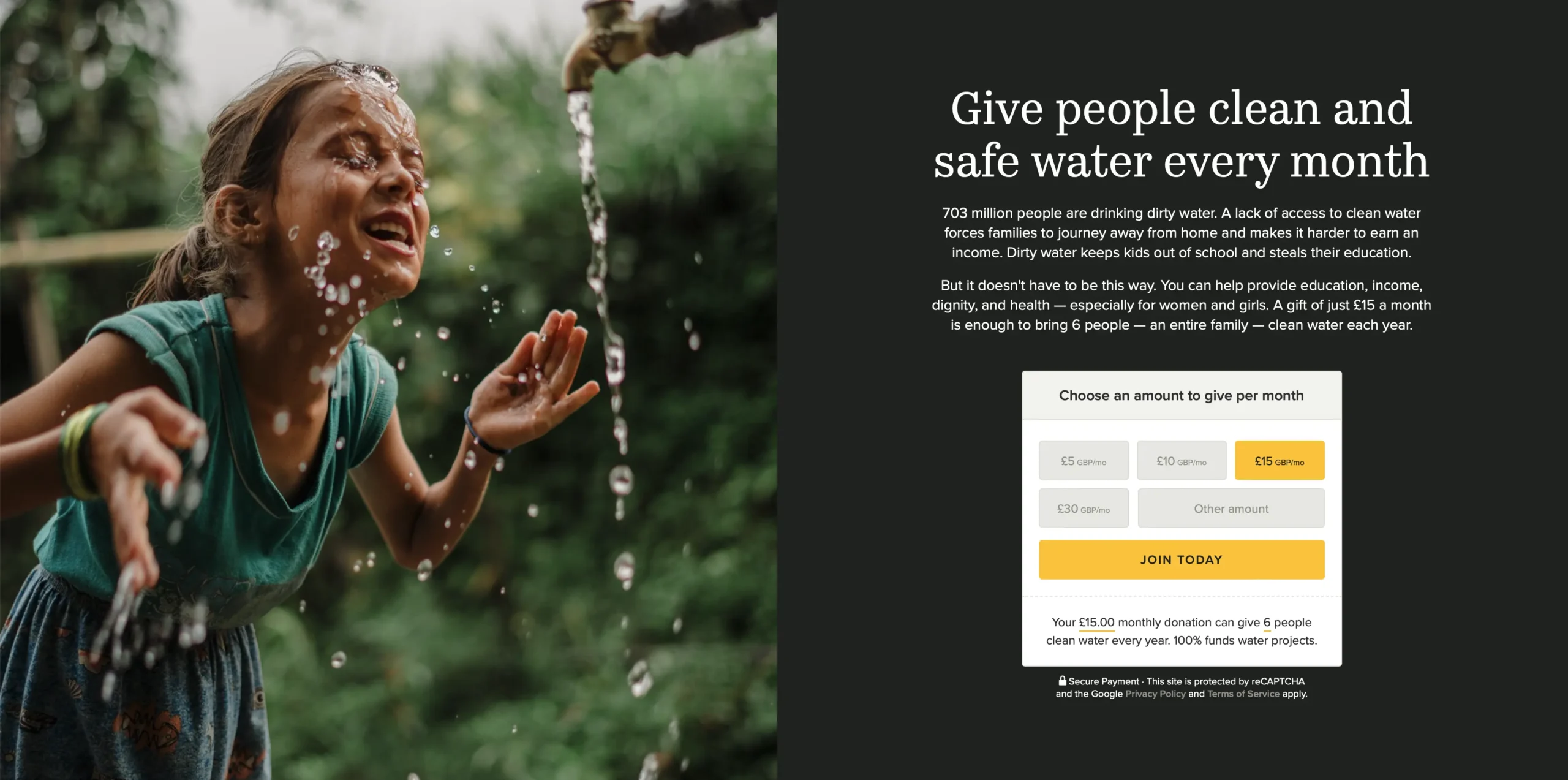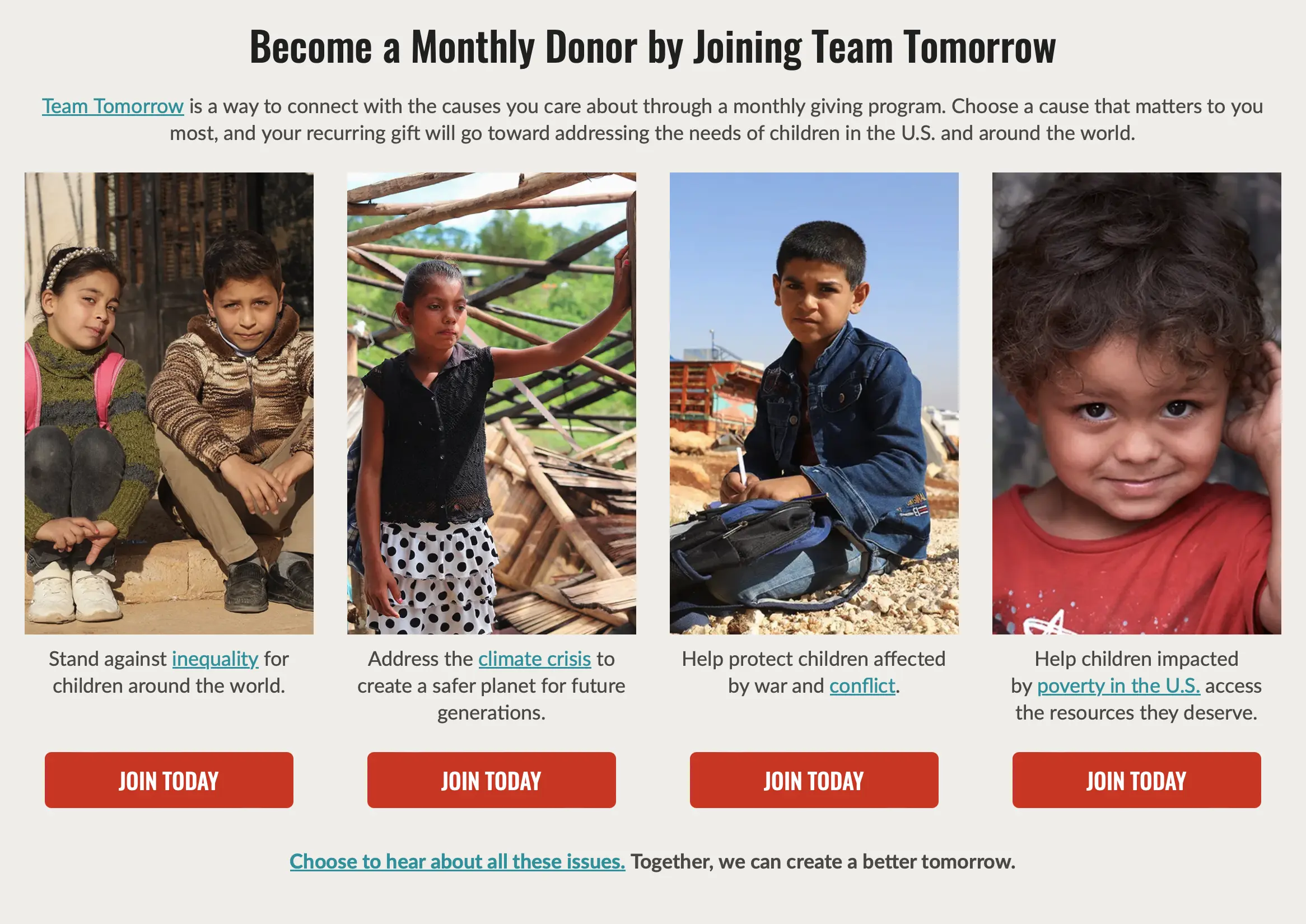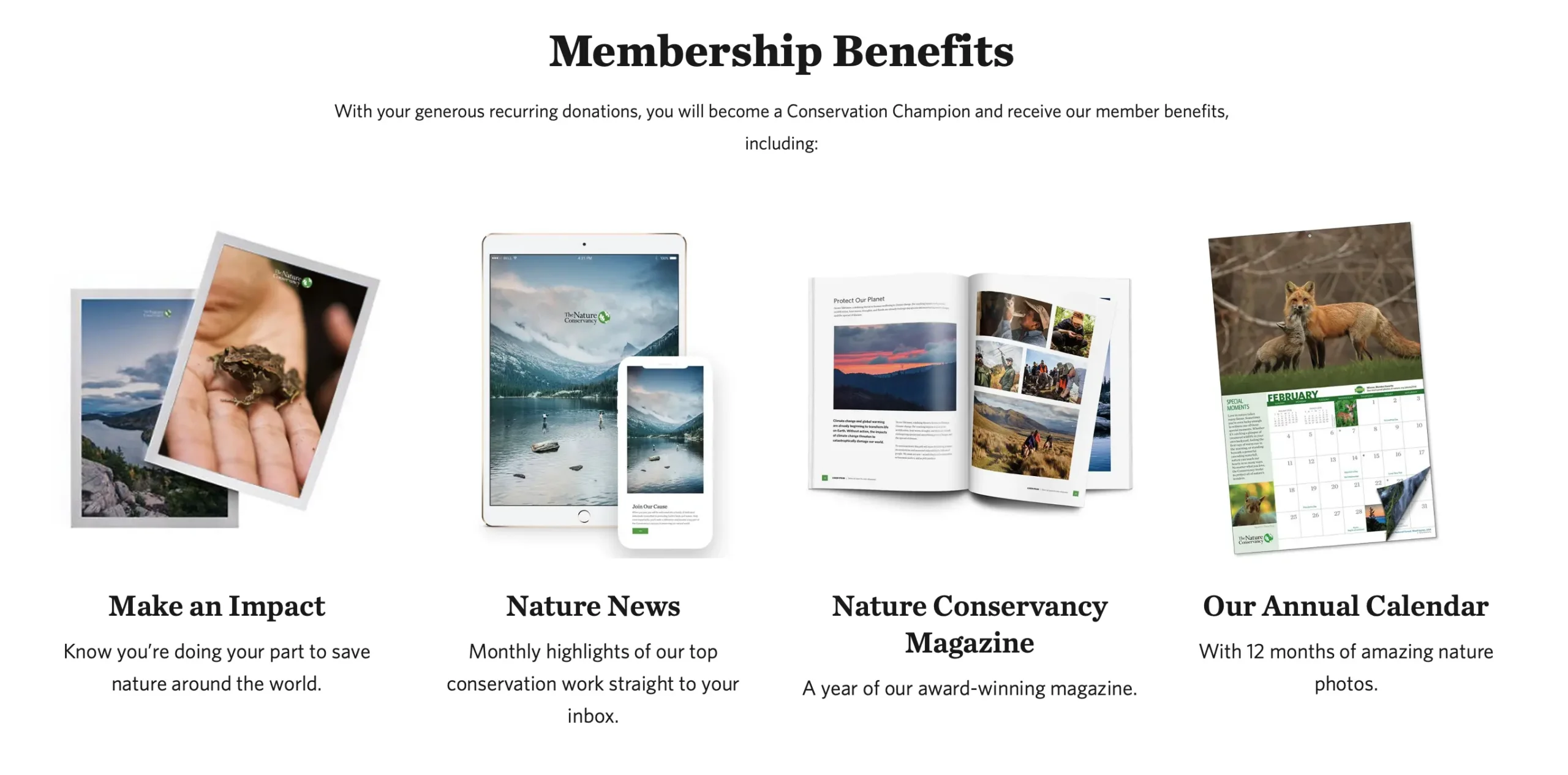Would you rather chase 1,000 one-time donors—or have 100 people who give every single month?
That’s the power of monthly giving. When done right, it becomes the foundation for your organization’s long-term growth. Rather than relying on unpredictable one-off donations, monthly giving brings in a steady, reliable revenue stream that allows you to plan, grow, and breathe.
Better yet, donors love it too. It’s easier for most people to give $10 a month than to donate $120 all at once. That’s the psychology behind why subscription services thrive – and why monthly giving works so well for nonprofits.
In this guide, we’ll show you how to build a monthly giving program from scratch and show monthly giving program examples of successful nonprofits. You’ll learn how to design it, promote it, and grow it—without being pushy or needing a massive budget.

Why Monthly Giving Matters
If you’re focused on sustainable nonprofit growth, this is one of the most important strategies to implement.
Here’s why a $10/month donor is often more valuable than a $100 one-time donor:
- Predictable revenue: You know what’s coming in every month, which means better planning and more financial stability.
- Higher retention: Monthly donors tend to stay involved for 2–3 years on average. Compare that to the one-year lifecycle of most one-time donors.
- Stronger relationships: People who give monthly are more likely to see themselves as part of your mission. This builds emotional connection and loyalty.
Example: If you gain just 200 people giving $20/month, that’s $4,000 in revenue every month – or $48,000 a year. And you’re not chasing donors every 30 days to make it happen.
Step 1: Give Your Program a Name That Sticks
People don’t want to just “sign up for monthly giving.” They want to join something meaningful.
Naming your program turns a donation into an identity. It makes supporters feel like they’re joining a community—not just setting up a recurring payment.
Tips for choosing a strong name:
- Use community-focused language: “club,” “circle,” “collective”
- Align with your mission: For example, a clean water org might call their group “Water Guardians”
- Keep it clear and inspiring
Examples:
- Pathway Partners (for education nonprofits)
- Guardians of Change (for social justice orgs)
- Compassion Collective (for humanitarian causes)
Start by brainstorming three potential names that align with your mission, are easy to remember, and spark emotional connection.

Step 2: Set Smart Giving Amounts
Avoid leaving the giving amount open-ended. While “Give what you can” seems inclusive, it often results in decision fatigue or hesitation.
Here’s how to guide donors toward sustainable monthly support:
- Offer 3 suggested giving levels ($20, $50, $150)
- Use the middle tier as the default selection
- Explain what each amount accomplishes
For example:
- $20/month feeds a family two warm meals each week
- $50/month provides school supplies for one student
- $150/month offers five nights of shelter for a family in crisis
When donors understand their impact, they’re more likely to commit – and stay.

Step 3: Build a Clear Value Proposition
Why should someone choose to give monthly rather than just making a one-time gift?
Your messaging should answer that question immediately. Think beyond the donation itself – focus on what it means to be part of the program.
Effective value propositions often include:
- A clear impact statement (what the donor’s monthly support achieves)
- A sense of exclusivity or membership
- A preview of what they’ll receive (e.g., updates, behind-the-scenes access)
Here’s a sample you could use: “When you join our monthly giving circle, you’re helping children stay in school, every month. You’ll receive exclusive updates and see the ongoing difference you’re making.”
Keep it short, emotionally compelling, and centered around outcomes.

Step 4: Promote It Often – and Everywhere
A big mistake nonprofits make? Only mentioning monthly giving once a year – or burying it on a donation form.
To grow your program, promotion needs to be consistent and visible. Integrate it into your everyday communication.
Where to promote:
- Donation pages: Feature monthly giving as the default choice
- Email campaigns: Send a welcome series to new donors, including an invite to become a monthly supporter
- Social media: Use posts, stories, and video content to tell the story of your monthly donor community
- Thank-you pages: After a one-time gift, invite donors to make their support ongoing
Also, make sure your social media bios and email footers include a call-to-action like:
“Become a monthly supporter and make change happen every single month.”
Step 5: Convert One-Time Donors into Monthly Givers
Many people who give once are willing to give again. All you need to do is ask.
Strategies to convert:
- Add a post-donation upsell: “Would you like to turn this into a monthly gift?”
- Set up an automated email sequence for first-time donors with a clear upgrade invitation
- Use urgency and impact: “Lock in your impact for the next 12 months by becoming a monthly partner”
You can even test different messages to see which language drives the most conversions.
Step 6: Keep Monthly Donors Engaged
Retention is everything. Getting someone to sign up for monthly giving is only the first step – now you need to keep them feeling connected.
How to engage monthly donors:
- Send monthly or quarterly impact updates (with stories and photos)
- Celebrate milestones (e.g., “You’ve been a monthly supporter for 6 months!”)
- Offer exclusive updates or perks (early access to stories, thank-you videos, etc.)
You don’t need a huge team to do this. A simple email with a few photos and a heartfelt thank-you goes a long way.
Sample subject line: “You made this possible, [Name]”
Inside the email: show the real, tangible impact they’ve made in the past 30 days.
Final Thoughts
Monthly giving isn’t just a fundraising strategy. It’s a way to build long-term, values-aligned relationships with your most dedicated supporters.
Here’s a quick roadmap to get started:
- Name your program and give it a clear identity
- Choose suggested giving amounts with impact examples
- Create a strong, emotionally driven value proposition
- Promote monthly giving consistently across platforms
- Set up systems to convert one-time donors
- Keep your monthly donors engaged, appreciated, and informed
Start simple. Start small. But start now.
Because sustainable nonprofit growth starts with steady, recurring support – and that starts with you.
